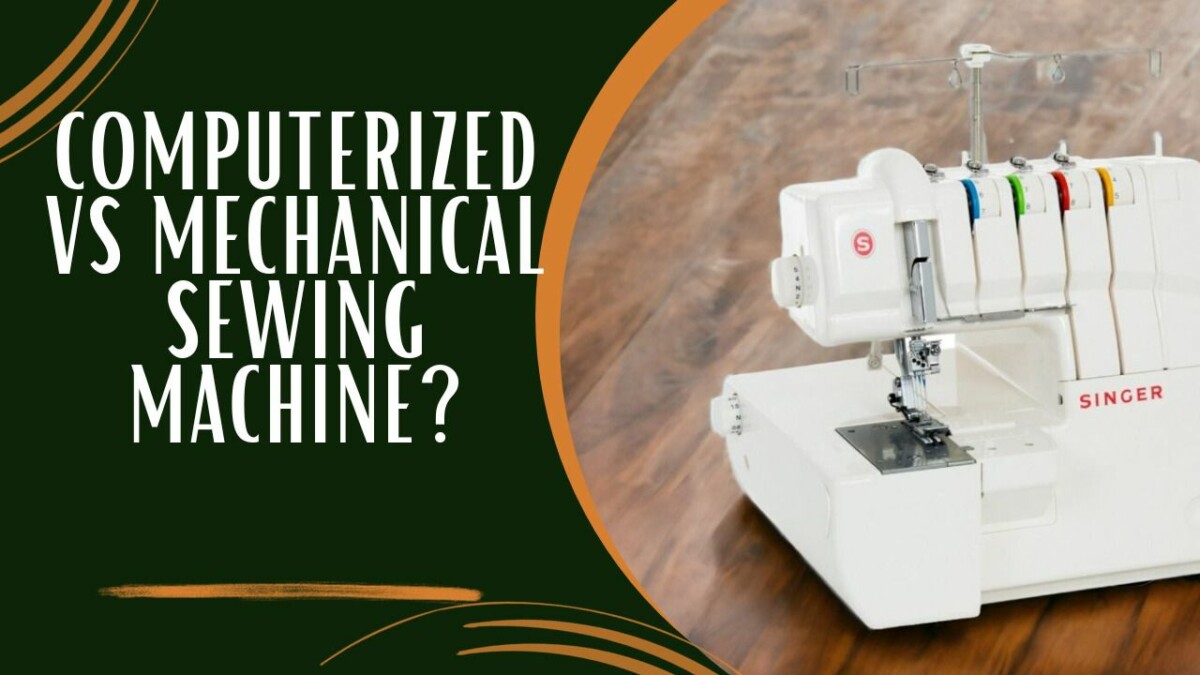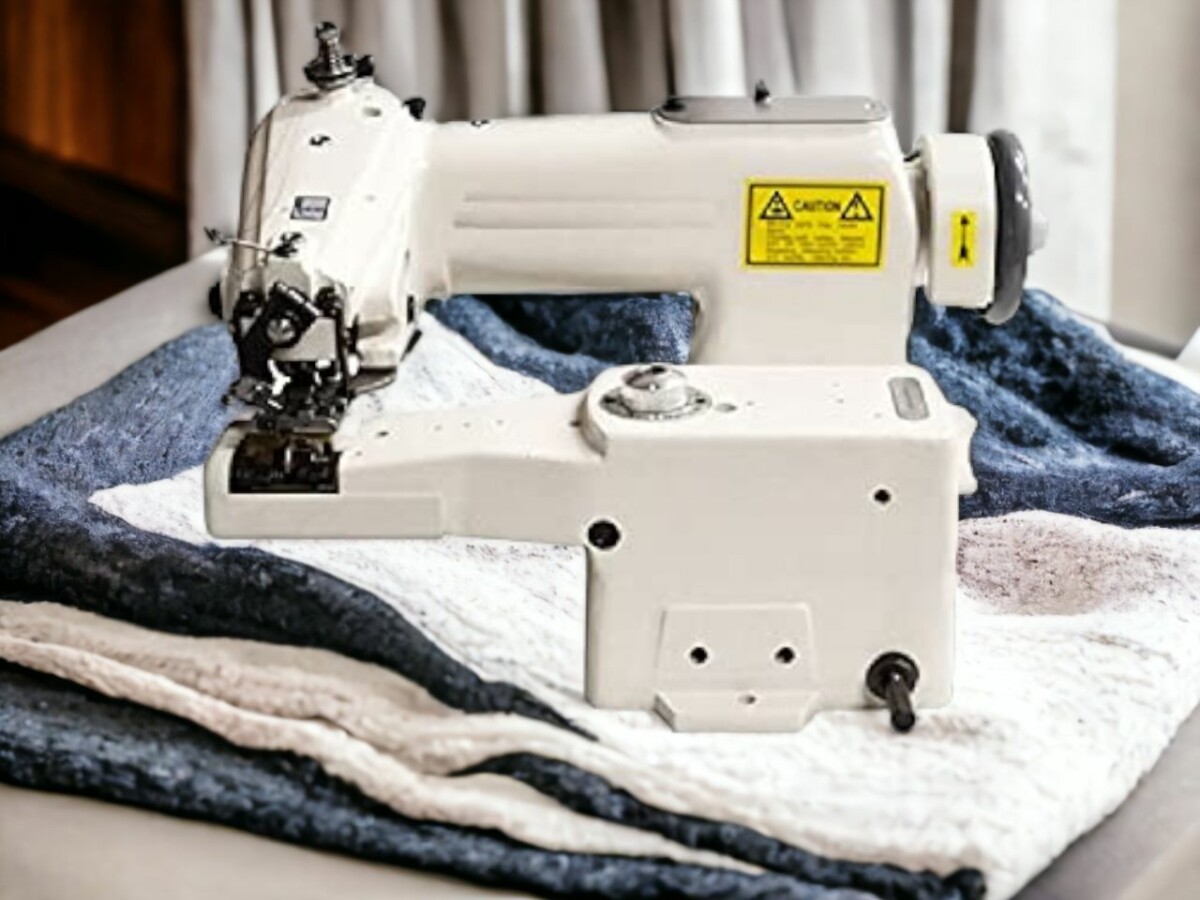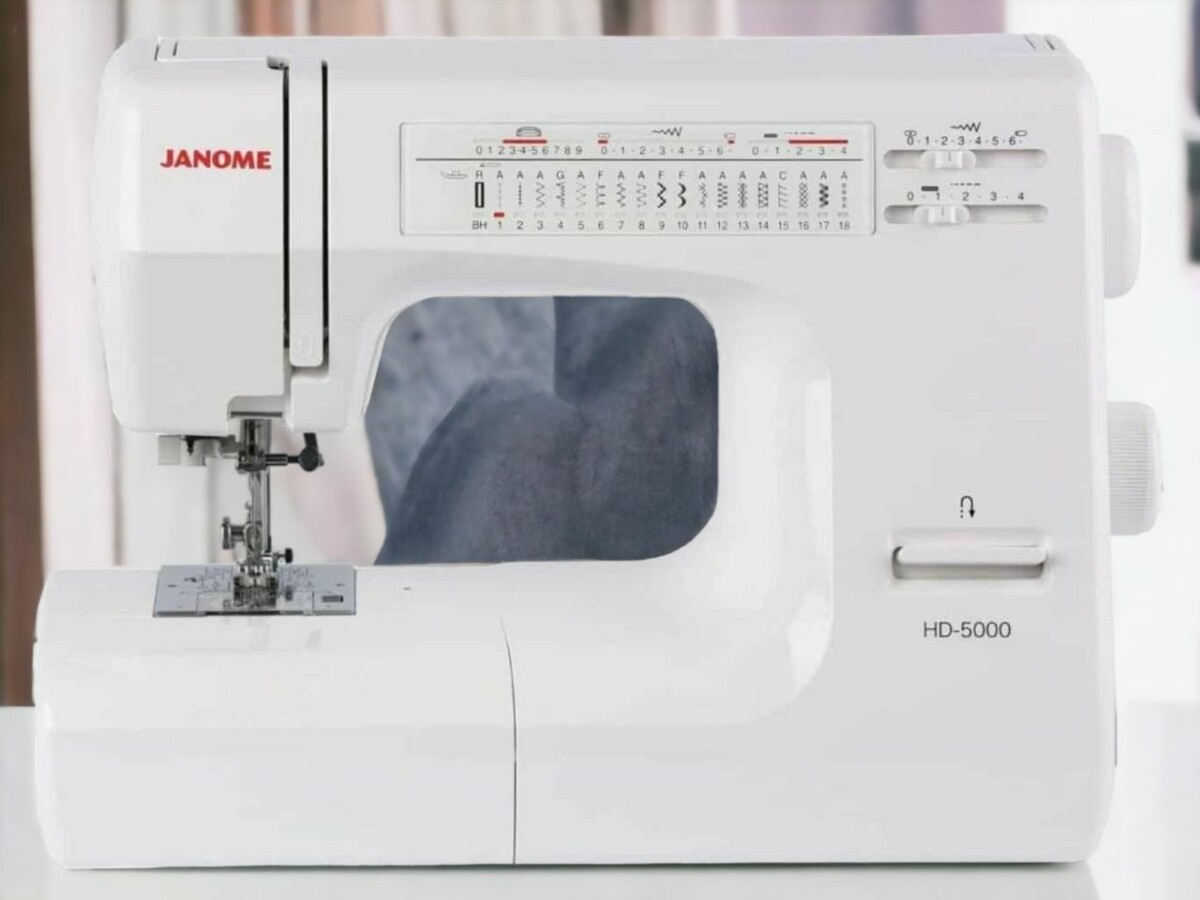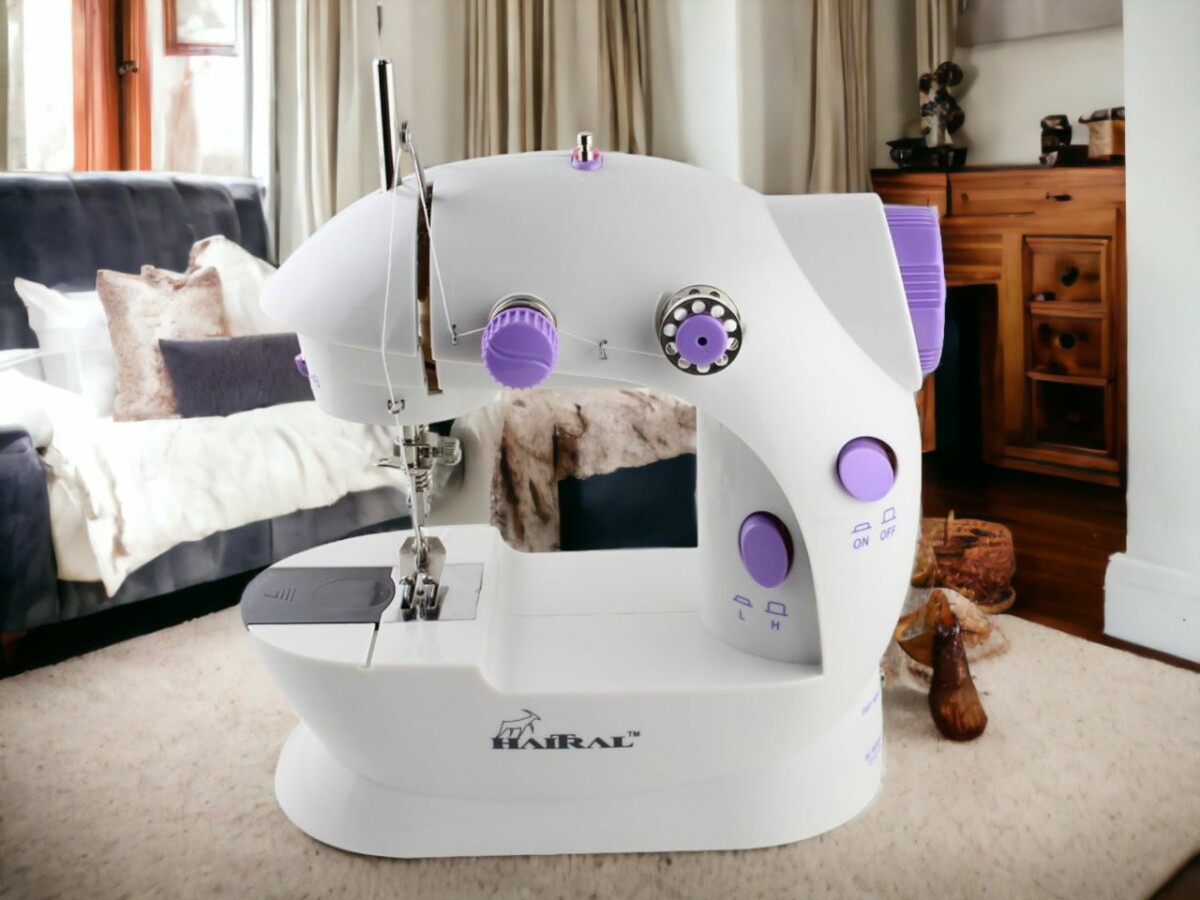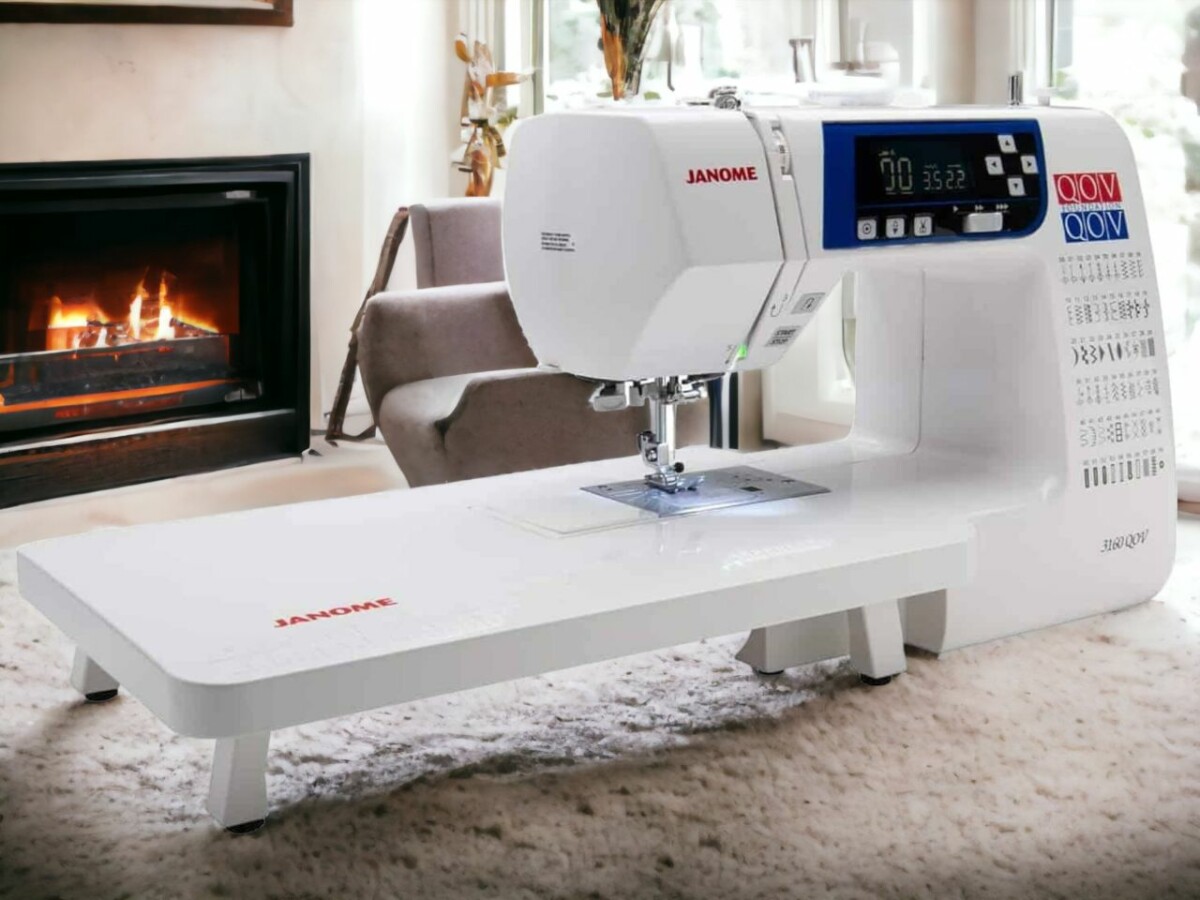So, you’ve got your eye on that complex quilt pattern, right? You’re just itching to get started. Hold up, though. Have you given thought to what machine’s gonna be your best bet – mechanical or computerized?
Let’s dive into this together and clear up any confusion. We’ll break down what makes each type unique, discuss the good and bad sides, and think about how it’s gonna affect your bank balance.
You’re not just selecting a piece of equipment here, you’re picking out a companion for your creative voyage. Ready to make a smart choice? Let’s get into it!
Differences Between Computerized and Mechanical Sewing Machines
Computerized sewing machines come packed with automated features, a wide array of stitches, and digital displays, making them perfect for more advanced sewing projects. Meanwhile, mechanical machines are easier to operate manually, often more robust, and are best suited for beginners or simpler tasks.
When it comes to the showdown between computerized and mechanical sewing machines, there’s a lot you need to think about – from your personal likes and dislikes to your particular sewing requirements.
Now, let me tell you, computerized machines are a whole other level. They give you pinpoint control, a crazy variety of stitches, and all sorts of automated features that take your sewing game up a notch. You can set patterns, cut threads on autopilot, and even control the speed of your sewing with just a click.
When you look at the features, these high-tech machines come with automatic needle threading, bobbin winding, and adjustments for stitch length and width. They’re absolutely killer for detailed work and making complicated tasks look like a walk in the park.
But, fair warning, they can be a bit more challenging to master compared to the good old mechanical ones.
The Pros and Cons of Buying Used Sewing Machines
False
Navigating the World of Accessories and Repairs
Navigating the world of sewing machine accessories and repairs can feel like learning a whole new language, whether your machine is all bells and whistles or totally old-school. It’s super important not just to get the hang of it, but to really dive in if you want to keep your gear in top shape and take your sewing to the next level.
When we’re talking repairs, finding somebody you can trust is key. You wouldn’t lend your car to someone who’s never driven, right? So don’t hand over your machine to just anyone. A top-notch repair service is worth its weight in gold. They’ll figure out what’s up with your machine quickly and accurately, saving you a whole lot of hassle and cash in the long run.
Now, let’s talk accessories. Don’t sleep on the power of specialized presser feet, they’re game-changers. Regardless of what kind of machine you’re working with, these little gems can seriously up your sewing game. They give you more control, even when you’re dealing with tricky fabrics or intricate designs.
Choosing the Right Machine Based on Sewing Needs
Alright, so you’re in the market for a new sewing machine, but you’re torn between a mechanical and a computerized version. Let me break it down for you.
First, we gotta talk about your budget and what you’re getting for your buck. Mechanical sewing machines are like the sturdy workhorses of the sewing world – they’re not only affordable but also tough enough to handle heavy-duty sewing jobs. But if you’ve got the cash to splash, you might want to consider a computerized machine. Sure, they’re a bit more expensive, but they come loaded with a bunch of automated features that make whipping up complex, intricate designs a piece of cake.
Next, think about what you’re actually going to be doing with the machine. If you’re just looking to do some basic sewing, a mechanical machine should do the trick. But if you’re planning on tackling more complex projects, a computerized machine with a ton of stitch options can be a game-changer.
Finally, don’t overlook the importance of specialized presser feet. They’re like the secret weapon of sewing. For example, a zipper foot can make sewing zippers way easier, and a buttonhole foot? It’s a total lifesaver when it comes to sewing buttonholes.
In the end, the best choice for you depends on what you’re hoping to get out of your sewing projects. So, take your time, weigh your options, and make sure your choice reflects your goals.
Happy sewing!
Buying New Vs. Used: What to Consider
Alright, let’s break down this major choice you’re about to make: picking between a brand-spanking-new machine or one that’s already been broken in.
There’s a bunch of perks when you go for a new sewing machine: you score a warranty, the latest gizmos, and a sense of security.
But hold up, don’t brush off the thought of snagging a used one just yet. There are a few things to weigh up when scouting a second-hand sewing machine: the current state it’s in, its maintenance track record, and whether there are spare parts easily available.
A well-loved and looked-after used machine can deliver trustworthiness and character, often without emptying your wallet.
In the end, whether you go for the new or used route should mesh well with your budget, your sewing requirements, and how cool you’re with the possibility of doing repairs.
More About Sewing Machines: Mechanical, Computerized, and Beyond!
In the end, it all boils down to figuring out what tool will best meet your sewing needs. Nevertheless, there’s so much more to explore beyond the standard computerized vs mechanical debate. Let’s take a glance at some potential twists and turns in your sewing machine journey. Epic right? I know!
For instance, have you ever thought about the compatibility of your sewing machine for a sewing table? Sure, your new computerized wonder might dazzle you with all its fancy stitches, but don’t be left red-faced when it doesn’t fit your sewing table. Make sure you check it out, might save you some hustle.
And let’s get a little quirky here – ever considered using coconut oil on your sewing machine? Yea, sounds wacky, I know. We all love a touch of organic stuff, but it pays to know if an item as delicate as a sewing machine can take it. Do your research, people! I ain’t playing here.
Last but not least, before you get lost in the whirlpool of computerized vs mechanical, why not take a step back and consider if you actually need an industrial sewing machine? For big projects or professional needs, these beasts can truly be a game-changer. Yeah folks, time to think big!
So folks, there you have it – the sewing machine world is more than just about being computerized or mechanical. It’s about finding a tool that will be your trusty companion through all your sewing adventures. Cheers to that!
Sewing is definitely one of my biggest hobbies. I’ve been doing it since i was young, thanks to my mother. I specialize in sewing, and that’s what i mostly write about.

